- Have any questions?
- +86 18868944843
- roy@nbthe.com
How to choose a suitable tennis racket
How to choose a suitable tennis racket


Is it difficult to choose the right type when choosing a racket? In fact, whether you are a beginner, an advanced person, a professional player, a golfer who is thinking about or trying to win a championship, it is absolutely very important to be suitable for his own racket.
Before you buy a tennis racket, you have to consider a few factors. First of all, you have to identify yourself as a beginner or have approached the professional level. Second, you want the racket to give you control, power, or both.
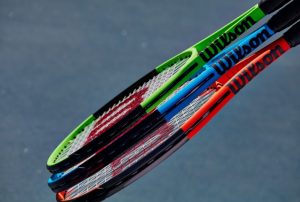
But before that, you must first define which type you want or which type you want to be. [Offensive], [Full-field], [Bottom-line] players need to have their own exclusive shots, suitable for their own. It is the best.
After clarifying your own type of combat, you must also select the tempo of different specifications according to your own level. Next, we will understand the following three basic racquet specifications:
1 beginner racquet
This kind of tempo is generally light in weight and has a large head and a thick frame. It is suitable for players who have a slower swing and a smaller amplitude and want to gain more hitting power. Like this power shot, the average area is 107 to 135 square inches, weighs only 8 to 9.5 ounces, and the length is 27 to 29 inches, which maintains a good balance when hitting the ball.
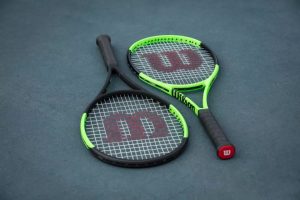
2 advanced racket
The so-called advanced racquet is lighter, more balanced, and has a lighter head (at least not heavy), making it ideal for beginners or middle-level tennis enthusiasts. The weight is typically 9.5 to 11 ounces, with an area of 95 to 102 square inches and a length of 27.5 to 28 inches.
3 professional rackets
Smaller racquets are suitable for high-level or professional players, weighing between 11.5 and 13 ounces (or even heavier), with an area of only 85 to 98 square inches. The border is narrower, lighter and head balanced, making it easier for players. control.

After picking the correct style of the racket, you should also understand the difference between the material of the racket. Carbonaceous racquets are lighter, more powerful and more suitable for beginners. Of course, there are also aluminum-based and titanium-based racquets that give players greater impact and comfort.
When you have selected the appropriate racket material, the next step is to choose the appropriate racket model, depending on the head area. Weight distribution and handle size breakdown:

Head area
Whether it’s an offensive, full-court or bottom-line player, the right head determines the performance that the player wants. At present, most of the heads are between 85 and 135 square inches. Beginners and middle-level players are more suitable for large-faced racquets, which can make the ball more powerful and stable (large fault tolerance). The general characteristics of the big face racket are as follows:
Face: 106 to 118 square inches
Length: 27 inches
Weight: lighter than 11 ounces
Balance point: head weight,the balance point

Small head racquets are more suitable for professional players or high-level players, they tend to pay more attention to control and balance effects. The general characteristics of the small racket are as follows:
Face: 85 to 98 square inches
Length: 25 inches
Weight: lighter than 9.4 ounces
Balance point: light head, centered at the balance point
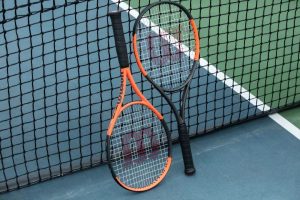
Racket weight distribution
The weight distribution mentioned here is the specific distribution of the overall weight from the handle to the head, which can be roughly divided into two categories:
The head is heavier: this kind of tempo is most suitable for beginners. The heavier the head, the easier it is to absorb the vibration energy of the racquet contact, which can produce more impact and, of course, more stable. When the player uses the heavy-duty racket of the head, the large weight can provide more hitting power, while the vibration and torque are also smaller, of course, stability and control are better.
The head is lighter: this type of racquet performs extremely well in front of the net and does not have the same strength as a heavy shot racquet when hitting the ball at the bottom line. However, this is more suitable for professional players, because it is more beneficial for players to maintain control and balance, easier to control and rotate. In addition, the lighter racquet is less vibrating, which is very important for players who are always on the battle.
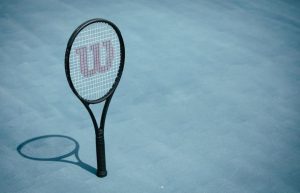
Handle size
Choosing the right handle is very important for preventing injuries. If the handle is too large, the muscles of the hand will be tightened. If the handle is too small, the pressure on the wrist and elbow will be caused. Finding the right handle size is very simple. Hold the hand flat and use a ruler to measure the distance between the fingertips of the ring finger and the second strip of the three main palm prints in the palm. The following is the correspondence:
No. 0 handle: 4.0 inches
No. 1 handle: 4.0+1/8 inches
No. 2 handle: 4.0 + 1/4 inch
No. 3 handle: 4.0+3/8 inches
No. 4 handle: 4.0 + 1/2 inches
No. 5 handle: 4.0+5/8 inches
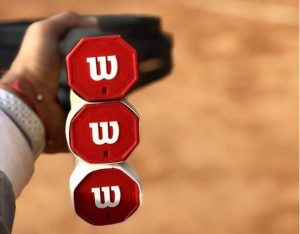
Most teenagers with adult height can use No. 0, No. 1 or No. 2 handles; female players are generally suitable for No. 1, No. 2 or No. 3 handles; male players are generally suitable for No. 3 or No. 4 handles; Large hands can use No. 5 handle.
If the above details dazzle you, then you should consult a professional. In addition, we are not saying that tennis can be played by choosing the right racket. But if you are very fond of the sport, then understanding these will be very beneficial to you.

